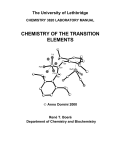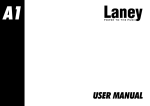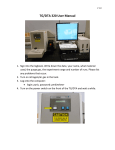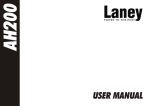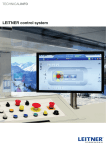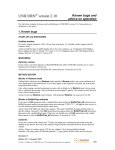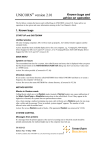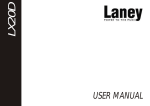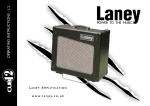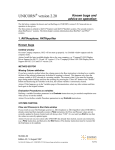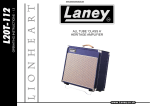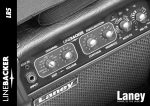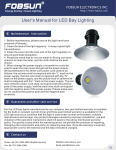Download Analysis of Plastics by ATR FT-IR Spectroscopy.
Transcript
ORGANIC CHEMISTRY CHEM 12B LANEY COLLEGE INSTRUCTOR: S. CORLETT Analysis of Plastics by ATR FT-IR Spectroscopy. Reading For background on this technique see the following websites: http://www.nuance.northwestern.edu/KeckII/ftir2.asp http://en.wikipedia.org/wiki/Attenuated_total_reflectance http://las.perkinelmer.com/content/TechnicalInfo/TCH_FTIRATR.pdf For reference to the manual on our ATR sample cell, made by Pike Technologies, see the ATR manual at the school website, entitled MIRacleATR User Manual at: http://www.laney.edu/wp/corlett/chemistry-12b/spectroscopy/ Introduction Attenuated Total Reflectance Fourier-transform infrared spectroscopy (ATR FT-IR) is a special technique used for obtaining IR spectra of solids and liquids. The essential feature of this technique is that samples are placed in contact with a special material called an internal reflection element (or IRE) and as the IR signal is “reflected” many times through the material some of it is absorbed by the sample (see diagram below). The absorption and corresponding wavelengths are recorded by the detector. Sometimes the spectrum is viewed in absorbance (A) mode, rather than in transmittance (%T) (normal FT-IR, which is also called transmission IR). The key advantage to this technique is that the sample only needs to make good contact with the IRE and doesn’t require the use of NaCl plates, mixing with KBr or Nujol, or any solvents. The analysis of solids, such as plastics, is straightforward and only needs to be clean and small enough to fit over the sample area. Procedure You will be instructed on how to analyze samples of plastic using the ATR sample cell instrument during laboratory. Please bring samples of different plastics to analyze. Possible samples include: plastic bags of all sorts, hard plastics such as in heavy duty water bottles, soft flexible plastics, PVC tubing, etc. The item may need to be cut or “shaped” (by breaking) to fit the sample cell. Obtain the ATR FT-IR of your sample and corresponding peaktable. Version 20101026 ORGANIC CHEMISTRY CHEM 12B LANEY COLLEGE INSTRUCTOR: S. CORLETT Prelab and Exercise Find the structure of the following common plastic polymers: PVC, Nylon, polyethylene, polypropylene, polycarbonate, polyurethane, polystyrene, cellophane, and natural rubber. Your structure should show the repeating unit. Predict the characteristic stretching frequencies that should be observed in the IR for each of the functional groups found in these polymers. Note this information in your laboratory notebook (it does not need to be turned in). To Complete the Experiment – Partial Report Identify the key absorptions for your sample and compare with the information in your prelab, then deduce (refute or verify) the type of plastic. Version 20101026


